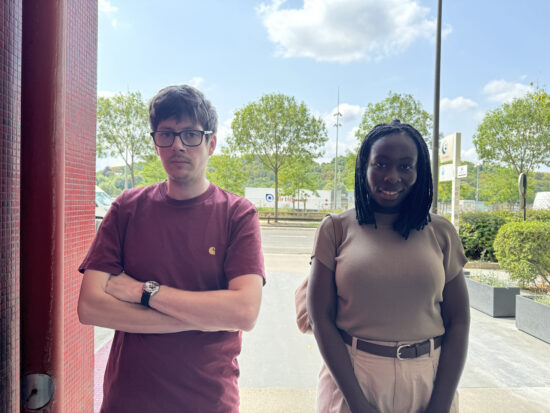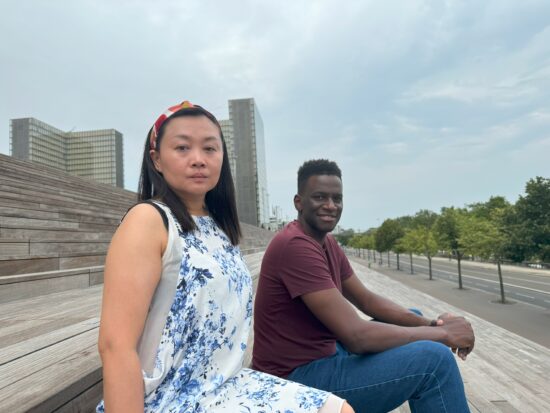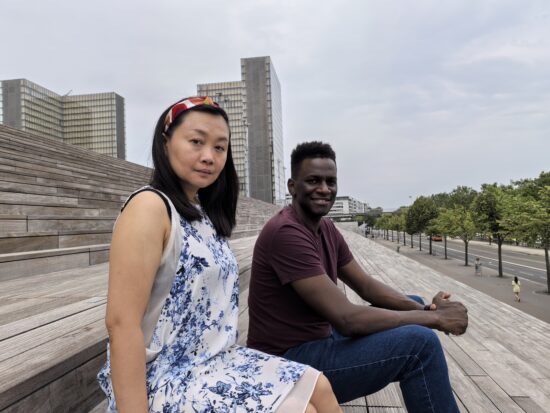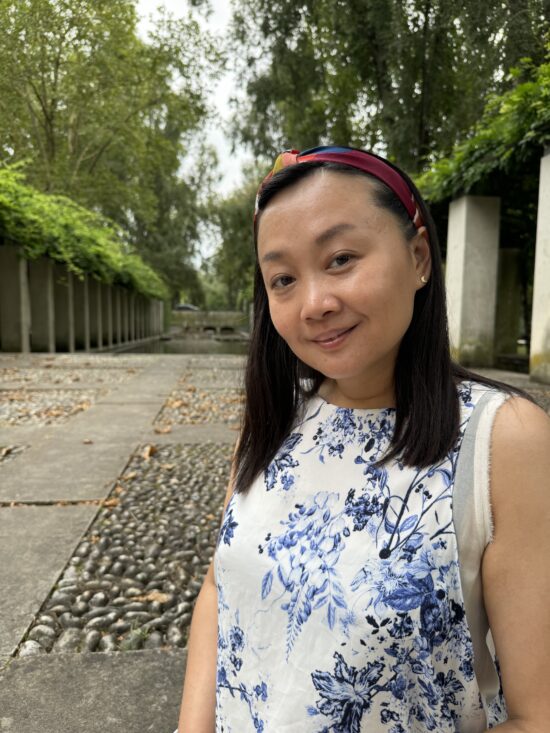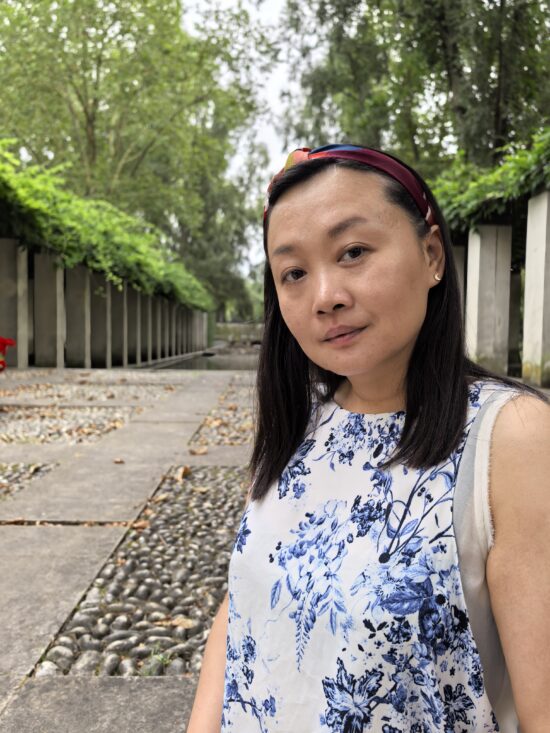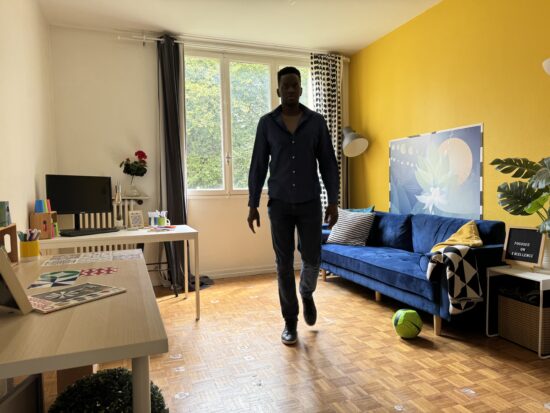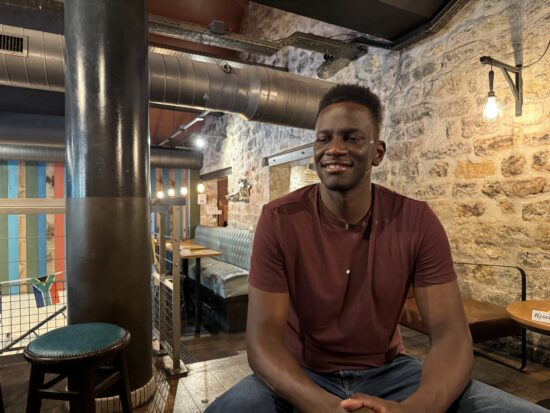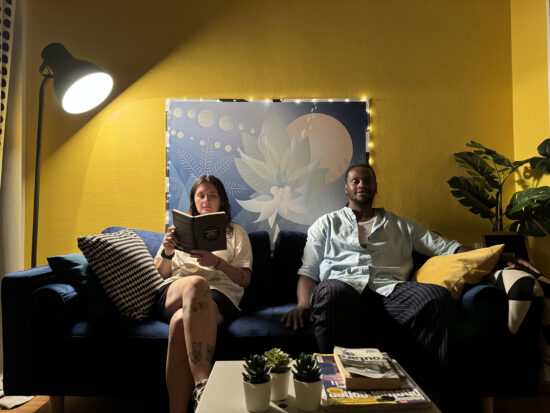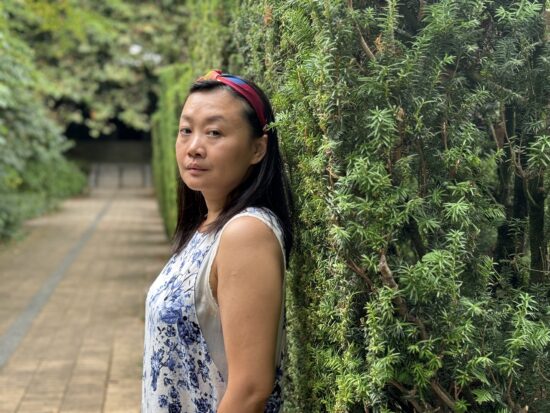We put the Google Pixel 9 Pro XL through our rigorous DXOMARK Camera test suite to measure its performance in photo, video, and zoom quality from an end-user perspective. This article breaks down how the device fared in a variety of tests and several common use cases and is intended to highlight the most important results of our testing with an extract of the captured data.
Overview
Key camera specifications:
- Primary: 50MP 1/1.31″ sensor, f/1.68-aperture lens, 82° field of view, OctaPD, OIS
- Ultra-wide: 48MP sensor, 1/2.55″ sensor, f/1.7-aperture lens, 123° field of view, Quad PDAF
- Tele: 48MP sensor, 1/2.55″ sensor, f/2.8-aperture lens, 22° field of view, Quad PD, 5x optical zoom
Scoring
Sub-scores and attributes included in the calculations of the global score.
Google Pixel 9 Pro XL


Use cases & Conditions
Use case scores indicate the product performance in specific situations. They are not included in the overall score calculations.
Portrait
Portrait photos of either one person or a group of people
Outdoor
Photos & videos shot in bright light conditions (≥1000 lux)
Indoor
Photos & videos shot in good lighting conditions (≥100lux)
Lowlight
Photos & videos shot in low lighting conditions (<100 lux)
Zoom
Photos and videos captured using zoom (more than 1x)
Pros
- Good exposure and highlight protection in most conditions
- Generally neutral white balance and nice colors
- Fast and reliable autofocus in video, benefits from field of view correction mode when focus target changes
- Good texture/noise trade-off in bright light, good fine detail in bright light and indoors, as well as in zoom and macro shots
- Good video stabilization in static and moving shots
- Photo and video artifacts well under control
Cons
- Dynamic range instabilities across consecutive shots, slight exposure stepping in video
- Underexposure, slightly inaccurate color rendering and chroma noise in very low light
- Occasional fusion artifacts at medium-range tele settings
- Depth estimation artifacts in bokeh mode
- Sharpness differences between video frames when walking while recording, especially indoors or in low light
The Google Pixel 9 Pro XL did very well in the DXOMARK Camera tests, taking it very close to the top of our ranking. Our testers found the latest Google flagship to be a very versatile device that was capable of producing excellent image and video quality across a variety of shooting conditions.
With a new HDR imaging pipeline, images have a more true-to-life aspect, with optimized exposure, a more accurate tone-mapping, and sharper images on everyday scenes.
Its colors, accurate skin tones and very wide dynamic range were outstanding, making for excellent portrait and landscape still and video shots alike. The fast and reliable autofocus system kept the subject in focus in most conditions though some face detection issues did impact autofocus performances on our new AFHDR Portrait setup. Good detail was maintained up to long range tele zoom shots and image quality in general was good across the entire zoom range. Effective video stabilization made for smooth footage and, like for stills, our testers observed very few video artifacts.
In addition, as an AI-powered camera, the Google Pixel 9 Pro XL integrates a wide array of AI features, making it one of the most advanced smartphones to date. Its Video Boost functionality almost gives a cinematic rendering with better-handled stabilization, almost no visible noise, and very nice color rendering. In addition, the Super Res Zoom Video feature enables high-quality zoom up to 20x without loss of detail. Thus, image quality is now helped with AI tools while preserving a pleasant and realistic rendering.
Although our computed score corresponds to the device’s image quality without the AI features, further down in this article, we provide a specific case study of the Video Boost mode.
The Pixel 9 Pro XL is a great option for taking pictures and recording video in low light, thanks to good exposure, accurate white balance, nice color rendering, accurate autofocus and few artifacts. However, compared to the very best devices, texture was low and noise levels were high, especially in terms of chroma noise.
In our tests, the Google Pixel 9 Pro XL made it among the very best devices in our Portrait category. It relies on efficient exposure strategy with pleasant brightness of the faces and well balanced contrast in most conditions. Skin tones are well represented for all, though some challenging conditions might provoke color shifts on faces rarely. In bright conditions, noise remains under control and details are very well preserved, still dimmer environments sometimes lead to visible chroma noise and texture non-uniformity.
When shooting with the Google Pixel 9 Pro XL, the device delivers a consistently high level of image quality across most zoom ranges, enhancing the overall user experience. Its telephoto module, with an equivalent focal length of approximately 110mm, captures sharp, well-exposed images at 5x zoom with vivid color rendering.
At around 2x zoom, the Pixel 9 Pro XL employs digital zoom by cropping the main sensor. While this results in slightly reduced detail and increased noise compared to the native focal length, the image quality remains satisfactory for most users. As zoom levels increase between 3x and 5x, the device applies advanced processing techniques to maintain image sharpness and detail, achieving strong performance relative to competitors. Beyond 5x zoom, the telephoto module takes over, producing bright and sharp images. Although the Pixel 9 Pro XL’s telephoto capabilities lag behind some leading devices in the DXOMARK database, such as the Xiaomi 15 Ultra, which preserves more detail, it still offers an excellent zoom experience for most users.
Test summary
About DXOMARK Camera tests: DXOMARK’s camera evaluations take place in laboratories and real-world situations using a wide variety of use-cases. The scores rely on objective tests for which the results are calculated directly using measurement software in our laboratory setups, and on perceptual tests where a sophisticated set of metrics allow a panel of image experts to compare aspects of image quality that require human judgment. Testing a smartphone involves a team of engineers and technicians for about a week. Photo and Video quality are scored separately and then combined into an overall score for comparison among the cameras in different devices. For more information about the DXOMARK Camera protocol, click here. More details on smartphone camera scores are available here. The following section gathers key elements of DXOMARK’s exhaustive tests and analyses. Full performance evaluations are available upon request. Please contact us on how to receive a full report.
Photo
Google Pixel 9 Pro XL
180
For scoring and analysis, DXOMARK engineers capture and evaluate more than 3,800 test images in controlled lab environments as well as outdoor, indoor and low-light natural scenes, using the camera’s default settings. The photo protocol is designed to take into account the main use cases and is based on typical shooting scenarios, such as portraits, landscape and zoom photography. The evaluation is performed by visually inspecting images against a reference of natural scenes, and by running objective measurements on images of charts captured in the lab under different lighting conditions from 0.1 to 10,000+ lux and color temperatures from 2,300K to 6,500K.

Main
Google Pixel 9 Pro XL
184
In our tests, the Pixel 9 Pro XL made it among the very best devices for still images capture. Photos had accurate target exposure and a very wide dynamic range, with the Pixel capturing better highlight detail than its competitors in many of our test scenes. In addition, the camera produced accurate white balance and nice colors, allowing for beautiful portrait shots under a variety of light conditions. The autofocus worked reliably and zero shutter lag technology allowed for instant capture of the decisive moment. The high levels of captured detail benefitted portrait shots and landscape images alike.
As one would expect, image quality suffered slightly in difficult conditions, such as backlit scenes or very low light, with some chroma noise creeping in. Our testers also observed some dynamic range inconsistencies across a series of consecutive shots in some scenes.
Close-Up
Like many rivals, the Google Pixel 9 Pro XL uses its ultra-wide module for capturing macro images. In practice this means you have to get very close to the subject in order to capture a frame-filling shot. Image quality in macro mode was on par with the predecessor Pixel 8 Pro and the direct rivals in the Ultra Premium segment. Close-up footage shows nice very image quality with pleasant color and accurate target.

Exposure
Google Pixel 9 Pro XL
134
Exposure is one of the key attributes for technically good pictures. The main attribute evaluated is the brightness level of the main subject through various use cases such as landscape, portrait, or still life. Other factors evaluated are the global contrast and the ability to render the dynamic range of the scene (ability to render visible details in both bright and dark areas). When the camera provides Photo HDR format, the images are analyzed with a visualization on an HDR reference monitor, under reference conditions specified in the ISO-22028-5 standard. Repeatability is also important because it demonstrates the camera's ability to provide the same rendering when shooting several images of the same scene.
The Google Pixel 9 Pro XL captured photos with an accurate target exposure and a very wide dynamic range, down to low light. Compared to the Pixel 8 Pro, target exposure has been improved and is now on par with the best in class. The new model was particularly outstanding in terms of highlight retention. Even in difficult backlit scenes, it was capable of protecting the highlights in the brightest parts of the background while maintaining good exposure on the foreground. Like most devices, the Pixel 9 Pro XL still struggles with some loss of contrast on faces in high dynamic range scenes, despite the enhanced dynamic range offered by HDR. However, it delivers a better trade-off than its competitor, the Apple iPhone 16 Pro Max, by prioritizing facial brightness over contrast.
Dynamic range could be slightly inconsistent across a series of consecutive shots, though, with some highlight clipping in some images.
When shooting in very low light without flash in night mode, our testers sometimes found images to be underexposed.

Color
Google Pixel 9 Pro XL
133
Color is one of the key attributes for technically good pictures. The image quality attributes analyzed are skin-tone rendering, white balance, color shading, and repeatability. For color and skin tone rendering, we penalize unnatural colors according to results gathered in various studies and consumer insights while respecting the manufacturer's choice of color signature.
Color rendering was excellent in both portrait and landscape shots. A fairly neutral white balance in most test conditions ensured good portrait results across various lighting conditions.

Autofocus
Google Pixel 9 Pro XL
135
Autofocus tests concentrate on focus accuracy, focus repeatability, shooting time delay, and depth of field. Shooting delay is the difference between the time the user presses the capture button and the time the image is actually taken. It includes focusing speed and the capability of the device to capture images at the right time, what is called 'zero shutter lag' capability. Even if a shallow depth of field can be pleasant for a single subject portrait or close-up shot, it can also be a problem in some specific conditions such as group portraits; Both situations are tested. Focus accuracy is also evaluated in all the real-life images taken, from infinity to close-up objects and in low light to outdoor conditions.
Our testers found the Pixel 9 Pro XL’s autofocus to be fast and accurate. In addition, zero shutter lag is well implemented, allowing for easy capture of the decisive moment, without any delay after pressing the shutter button.
Like on last year’s Pixel 8 Pro, a depth-of-field algorithm is used to recover detail on background faces. Given the algorithm’s starting material is a blurry face, this only works well to a certain extent, but it can help make a person in the background of a group shot more recognizable. In comparison, devices with a variable aperture, such as the Huawei Pura 70 Ultra, deliver better results, thanks to a real optical wide depth of field.
Google Pixel 9 Pro XL 132Texture
Texture tests analyze the level of details and the texture of subjects in the images taken in the lab as well as in real-life scenarios. For natural shots, particular attention is paid to the level of details in the bright and dark areas of the image. Objective measurements are performed on chart images taken in various lighting conditions from 0.1 to 10,000+ lux and different kinds of dynamic range conditions. The charts used are the proprietary DXOMARK chart (DMC), and the Dead Leaves chart. We also have an AI based metric for the level of details on our realistic mannequins Eugene and Diana.
With its 1/1.31″ sensor, the Google Pixel 9 Pro XL did a good job at preserving fine detail in bright light and under indoor lighting. However, texture decreased in low light. Some competitors, especially those with larger image sensors, are capable of capturing better detail overall.
Under indoor lighting, the Google Pixel 9 Pro XL was outstanding at freezing motion, allowing for good detail when capturing scenes with moving subjects.
When shooting in low light, the level of detail dropped lower than on many rivals, though.

Noise
Google Pixel 9 Pro XL
129
Noise tests analyze various attributes of noise such as intensity, chromaticity, grain, structure on real-life images as well as images of charts taken in the lab. For natural images, particular attention is paid to the noise on faces, landscapes, but also on dark areas and high dynamic range conditions. Noise on moving objects is also evaluated on natural images. Objective measurements are performed on images of charts taken in various conditions from 0.1 to 10000 lux and different kinds of dynamic range conditions. The chart used is the Dead Leaves chart and the standardized measurement such as Visual Noise derived from ISO 15739.
Noise was fairly well under control across all light conditions. Results were slightly better than on the Pixel 8 Pro and iPhone 15 Pro Max, but not on the same level as the Huawei Pura 70, which is an outstanding device in terms of image noise reduction.
While the Pixel 9 Pro XL did a good job at freezing motion, image noise was often noticeable on moving elements in the scene.
In low light shots, chroma noise could sometimes creep in, especially in areas of plain color.

Artifacts
Google Pixel 9 Pro XL
81
The artifacts evaluation looks at flare, lens shading, chromatic aberrations, geometrical distortion, edges ringing, halos, ghosting, quantization, unexpected color hue shifts, among others type of possible unnatural effects on photos. The more severe and the more frequent the artifact, the higher the point deduction on the score. The main artifacts observed and corresponding point loss are listed below.
In general, image artifacts were well under control on the Pixel 9 Pro XL. Our testers observed some flare with light sources within, or close to the edge of the frame, as well as moiré and some ghosting on fast-moving subjects, which are all fairly normal for a smartphone camera in this device segment. However, there were no fusion or other processing artifacts.

Bokeh
Google Pixel 9 Pro XL
175
Bokeh is tested in one dedicated mode, usually portrait or aperture mode, and analyzed by visually inspecting all the images captured in the lab and in natural conditions. The goal is to reproduce portrait photography comparable to one taken with a DLSR and a wide aperture. The main image quality attributes paid attention to are depth estimation, artifacts, blur gradient, and the shape of the bokeh blur spotlights. Portrait image quality attributes (exposure, color, texture) are also taken into account.
When shooting in bokeh mode, the shape and intensity of the bokeh and background spotlights were fairly natural. However, some slight subject segmentation issues meant the Pixel could not quite keep up with the very best in class.

Tele
Google Pixel 9 Pro XL
169
All image quality attributes are evaluated at focal lengths from approximately 40 mm to 300 mm, with particular attention paid to texture and detail. The score is derived from a number of objective measurements in the lab and perceptual analysis of real-life images.
With a 110mm equivalent focal length in its tele camera, the Google Pixel 9 Pro XL is a great option for smartphone photographers who like to take pictures at long tele zoom. At the native 5x setting, tele images showed good exposure, nice color and high levels of detail. In addition, the camera was able to maintain more detail than its predecessor when zooming in even further.
Things did not look quite as good at shorter tele zoom settings, though. Between a 1x and 2x tele zoom factor, our testers observed a loss of fine detail, especially in low light. In low light, we also detected slight noise that was roughly on the same level as the Pixel 8 Pro. White balance was pleasant, and exposure was good across all zoom levels. It’s also worth noting that the camera uses image fusion methods at intermediate tele zoom levels before fully switching from the main to the tele camera. This is done to ensure a consistent level of detail across the tele zoom range.

UltraWide
Google Pixel 9 Pro XL
169
These tests analyze the performance of the ultra-wide camera at several focal lengths from 12 mm to 20 mm. All image quality attributes are evaluated, with particular attention paid to such artifacts as chromatic aberrations, lens softness, and distortion. Pictures below are an extract of tested scenes.
The Pixel 9 Pro XL’s ultra-wide camera uses a slightly smaller image sensor than the Pixel 8 Pro from last year. Still, thanks to optimized processing, image results were very similar, with nice colors and neutral white balance. Noise could be visible in some scenes, especially around the edges of the frame, lowering the score slightly when compared to the best in class, such as the Huawei Pura 70 Ultra.
Google Pixel 9 Pro XL 172Video
DXOMARK engineers capture and evaluate almost 3 hours of video in controlled lab environments and in natural low-light, indoor and outdoor scenes, using the camera’s default settings. The evaluation consists of visually inspecting natural videos taken in various conditions and running objective measurements on videos of charts recorded in the lab under different conditions from 0.1 to 10000+ lux and color temperatures from 2,300K to 6,500K.
In video mode, the Google Pixel 9 Pro made it close to the top of our ranking, thanks to an accurate and stable exposure, fairly wide dynamic range, nice colors, and few artifacts. The camera captured fairly high levels of detail, and in addition, video stabilization worked effectively, both when standing still and walking while recording. Autofocus performance was close to last year’s Pixel 8 Pro, but slightly improved. The system worked reliably, with a smooth and efficiently integrated field of view compensation, earning itself the top score to date in the video autofocus category. On the downside, noise could be quite noticeable, especially in low light, where both luminance and chroma noise could be observed.
The Google Pixel 9 Pro XL was tested in HDR mode at 4K resolution and at a frame rate of 30fps, which is the maximum frame rate in HDR mode.
Please note that a compatible HDR display is required to see the full potential of the Pixel’s HDR rendering. YouTube only displays the original HDR rendering if videos are viewed on a compatible HDR screen. Otherwise, a compressed SDR video is displayed instead.
The Google Pixel 9 Pro XL has an updated version of the Video Boost feature, which was introduced last year. Using your Google Drive account, Video Boost uploads your videos to Google servers and processes them there instead of on the phone. The video processing and other improvements can benefit from the more powerful servers than from the AI processing pipeline in the phone. The feature must be activated via the camera app and requires a network connection.
Because our protocol does not cover the cloud-based processing of images, the results of Video Boost were not included in the final score. But we ran the feature through our protocol to see how it would perform, and our testers observed a considerable improvement in the videos’ quality.
In its keynote introducing the Pixel 9 Pro XL, Google claimed to bring “the highest quality video on a smartphone.” Based on our out-of-protocol test, Video Boost provided the best video quality we have seen so far from a smartphone. For example, with the feature activated, almost no noise was visible, even in very low-light conditions, and fine detail was well preserved in all conditions, resulting in a very good texture/noise trade-off. The Video Boost feature also provided good subject exposure with pleasant and accurate colors. Stabilization was effective and compensated very well for camera motion.
With these improvements, we were also curious about the kind of score that Video Boost would generate, so we ran the data through our Camera v5 formula. The resulting videos would have earned the Pixel 9 Pro XL a simulated Video score of 164, a top score for this category, compared with the 152 Video score the device achieved without the feature activated in Camera v5.

Main
Google Pixel 9 Pro XL
186

Exposure
Google Pixel 9 Pro XL
127
Exposure tests evaluate the brightness level of the main subject, the global contrast and the ability to render the dynamic range of the scene (ability to render visible details in both bright and dark areas). When the camera provides Video HDR format, the videos are analyzed with a visualization on an HDR reference monitor, under reference conditions specified in the metadata. Stability and temporal adaption of the exposure are also analyzed.
Video target exposure was generally accurate down to low light, with a fairly wide dynamic range.
In some scenes, dynamic range could be limited, with slight exposure instabilities.

Color
Google Pixel 9 Pro XL
131
Image-quality color analysis looks at color rendering, skin-tone rendering, white balance, color shading, stability of the white balance and its adaption when light is changing.
Video white balance was generally neutral, with pleasant colors and skin tones. In terms of video color, the Pixel 9 Pro XL was overall on par with its direct competitors and its predecessor Pixel 8 Pro.
For video, autofocus tests concentrate on focus accuracy, focus stability and analysis of convergence regarding speed and smoothness.
In our tests, the Pixel 9 PRo XL’s video autofocus worked very reliably. Focus was accurate and reacted swiftly to changes in the scenes. Our experts observed no focus failures in our testing and overall the Pixel was among the very best for this test category. It’s also worth mentioning that the new Google device slightly adapts the field of view when the focus changes to a different subject in the scene, making for smoother autofocus transitions.

Texture
Google Pixel 9 Pro XL
118
Texture tests analyze the level of details and texture of the real-life videos as well as the videos of charts recorded in the lab. Natural videos recordings are visually evaluated, with particular attention paid to the level of details in the bright and areas as well as in the dark. Objective measurements are performed of images of charts taken in various conditions from 0.1 to 10000 lux. The charts used are the DXOMARK chart (DMC) and Dead Leaves chart.
Texture levels in video were generally high when recording in bright light outdoors or under typical indoor lighting. Results were on par with direct competitors in the Ultra Premium bracket of the market.
In low light, the Pixel 9 Pro XL applied less heavy-handed noise reduction than the Apple iPhone 15 Pro Max, resulting in better levels of detail but higher noise levels.

Noise
Google Pixel 9 Pro XL
129
Noise tests analyze various attributes of noise such as intensity, chromaticity, grain, structure, temporal aspects on real-life video recording as well as videos of charts taken in the lab. Natural videos are visually evaluated, with particular attention paid to the noise in the dark areas and high dynamic range conditions. Objective measurements are performed on the videos of charts recorded in various conditions from 0.1 to 10000 lux. The chart used is the DXOMARK visual noise chart.
Video noise was generally well under control but could be noticeable along high-contrast edges in some scenes.
In low light, video noise became more intrusive, with noticeable luminance noise in the shadow portions of the frame. In such conditions, noise levels were higher than on the iPhone, but noise management was improved over the Pixel 8 Pro, with more finely grained noise.

Stabilization
Google Pixel 9 Pro XL
124
Stabilization evaluation tests the ability of the device to stabilize footage thanks to software or hardware technologies such as OIS, EIS, or any others means. The evaluation looks at residual motion, smoothness, jello artifacts and residual motion blur on walk and run use cases in various lighting conditions. The video below is an extract from one of the tested scenes.
In our test, the Pixel’s stabilization system was capable of counteracting camera shake effectively, both when standing still and walking while recording. Performance was on par with the direct competitors in the Ultra Premium segment. This said, the Google device displayed more sharpness differences between frames than the iPhone. This was particularly noticeable under indoor lighting and in low light.

Artifacts
Google Pixel 9 Pro XL
89
Artifacts are evaluated with MTF and ringing measurements on the SFR chart in the lab as well as frame-rate measurements using the LED Universal Timer. Natural videos are visually evaluated by paying particular attention to artifacts such as aliasing, quantization, blocking, and hue shift, among others. The more severe and the more frequent the artifact, the higher the point deduction from the score. The main artifacts and corresponding point loss are listed below.
In our tests, we only observed very few video artifacts on the Pixel 9 Pro XL. The device received penalty points for shifting the frame rate towards 24fps in very low light instead of 30fps like most competitors. With the camera only capable of 30fps in 4K HDR mode, a judder effect was also noticeable when panning. Thanks to 60fps HDR video, this did not occur on the iPhone.

UltraWide
Google Pixel 9 Pro XL
148
All image quality attributes are evaluated at focal lengths from approximately 12 mm to 30 mm, with particular attention paid to texture and smoothness of the zooming effect. The score is derived from a number of objective measurements in the lab and perceptual analysis of real-life video recordings.
On the ultra-wide end, the Pixel 9 Pro XL excels at capturing expansive landscapes and group scenes with a pleasing wide-angle aesthetic, delivering good color consistency and minimal distortion. Video stabilization is particularly effective, compensating well for hand shake and enabling smooth, cinematic pans at 0.7× magnification or similar settings. In well-lit conditions, detail levels are acceptable, though some softness and vignetting can be observed toward the edges of the frame. In lower light, image noise becomes more noticeable, and edge clarity diminishes slightly. Autofocus performs smoothly; however, like many ultra-wide modules, it features fixed focus, making it best suited for static or slow-moving subjects. Overall, the Pixel 9 Pro XL offers a dependable ultra-wide video experience with excellent stabilization, making it ideal for casual use and creative shots. While it doesn’t match the fine detail delivered by the telephoto zoom, it remains a strong performer in its category.

Tele
Google Pixel 9 Pro XL
140
All image quality attributes are evaluated at focal lengths from approximately 50 mm to 300 mm, with particular attention paid to texture and smoothness of the zooming effect. The score is derived from a number of objective measurements in the lab and perceptual analysis of real-life video recordings.
The Pixel 9 Pro XL’s telephoto lens delivers consistently strong video zoom performance, offering crisp detail, accurate colors, and smooth stabilization at medium to high zoom levels (up to 5× optical). The autofocus reliably locks on subjects with minimal hunting, producing clean, stable footage even while handheld. At longer zoom distances, there’s a slight drop in sharpness and increased grain in darker scenes, but overall the lens maintains a balanced mix of clarity and exposure. Google’s computational enhancements help smooth transitions between zoom levels, ensuring relatively consistent results. It’s a solid performer, though under very low light or extreme zoom, noise becomes more noticeable compared to flagship standouts.




